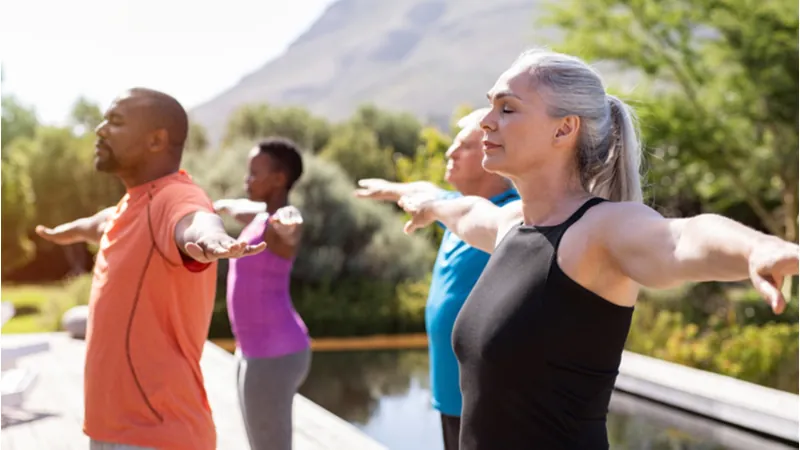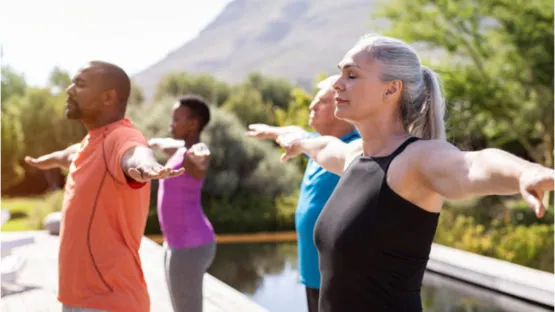Scientists have transferred the neuroprotective effects of exercise to sedentary mice via plasma transfusion and identified an obscure protein that might be responsible for the effect [1].
It’s in the blood
The idea that young blood can rejuvenate old organisms is ancient. Kings and tyrants reportedly took baths filled with blood of their unfortunate young subjects in an attempt to escape death. Unlike many other beliefs of ancient medicine, this one has been sort of upheld by today’s science.
Back in 2005, a paper by Irina and Michael Conboy outlined the anti-aging effects of heterochronic parabiosis – the exchange of blood between young and old mice whose cardiovascular systems have been linked together [2]. In those experiments, old mice were rejuvenated by the young blood, while the conditions of the young mice worsened.
Later, the Conboys shifted their attention to diluting old blood plasma, which largely recapitulates the benefits of blood exchange. We have written extensively about plasmapheresis (a general term describing manipulations with plasma, such as exchange, cleansing, and dilution), including an experiment that a team of Russian biohackers performed on themselves.
Can runners help couch potatoes?
Until now, very few experiments have been conducted that involved exchange of blood plasma between similarly aged animals. In this new study, the researchers took this untrodden path, treating sedentary young mice with the blood plasma of regularly exercising mice of the same age.
Exercise is one of the most effective anti-aging interventions available today, with multiple geroprotective qualities. In particular, exercise has been shown to protect brain health and improve cognitive abilities in patients with brain trauma and dementia.
How exercise exerts these beneficial effects is poorly understood, but it has been proposed that ‘exercise factors’—secreted from muscle and other tissues into the blood— subsequently signal to the brain.
In their experiment, the researchers divided young male mice into two groups: those that had running wheels in their cages and those that did not. The mice in the first group readily used the wheel, while the “wheelless” mice had much fewer opportunities to flex their muscles. The researchers observed that 28 days of running improved various health parameters, including overall neuron survival, the number of neural stem and progenitor cells (NSPCs), and the number of astrocytes, which are glial cells that perform maintenance tasks in the brain.
Then, two groups of sedentary mice received a transfusion of plasma from either the exercising mice (RP – “runners’ plasma”) or other sedentary mice (CP – “control plasma”). Amazingly, most of the beneficiary effects of running were transferred to sedentary mice via the runners’ plasma. Mice that received RP showed a notable increase in the proliferation and survival of hippocampal cells compared with CP-recipient mice. Consistent with the effects on neurogenesis, injection of RP, but not of CP, improved learning and memory in mice in several tests, such as the water maze test.
A new name in geroprotective proteins
To understand the molecular underpinnings of those effects, the researchers used RNA sequencing to analyze the hippocampal transcriptomes of mice treated with either CP or RP. They found that RP treatment led to changes in the expression of some 2,000 genes. Some genes involved in learning and memory, such as Foxo6, were upregulated, but the most significantly affected pathway, with some 250 genes downregulated by RP, was the acute inflammatory response. To confirm the anti-inflammatory qualities of RP, the researchers used it to treat mice with artificially induced neuroinflammation, with RP causing a notable decrease in inflammation.
The researchers then identified four top proteins that were differentially expressed in RP compared to CP and depleted them from RP one by one. The depletion of only one of them – the protein clusterin -was shown to abrogate the anti-inflammatory properties of RP, whereas depleting the other three had little to no effect.
Clusterin is an “enigmatic protein” [3] that, despite being implicated in many cellular processes, has not received a lot of scientific attention. The little research that exists confirms that clusterin probably takes part in neuroprotective and anti-inflammatory processes, though there is still a lot of uncertainty about its role [4]. If further research confirms clusterin as the main transmitter of the anti-inflammatory effects of exercise, this could open a new direction in geroscience.
The researchers even conducted a 20-person experiment showing that clusterin levels were notably upregulated in the regularly exercising subjects.
Conclusion
This exciting new research proves that exercise changes blood plasma composition and that some of the beneficiary effects of exercise can be transferred between organisms via plasmapheresis. The paper also identifies clusterin as a new potentially geroprotective protein, though more research is needed to fully elucidate its function.
Literature
[1] De Miguel, Z., Khoury, N., Betley, M. J., Lehallier, B., Willoughby, D., Olsson, N., … & Wyss-Coray, T. (2021). Exercise plasma boosts memory and dampens brain inflammation via clusterin. Nature, 1-6.
[2] Conboy, I. M., Conboy, M. J., Wagers, A. J., Girma, E. R., Weissman, I. L., & Rando, T. A. (2005). Rejuvenation of aged progenitor cells by exposure to a young systemic environment. Nature, 433(7027), 760-764.
[3] Jones, S. E., & Jomary, C. (2002). Clusterin. The international journal of biochemistry & cell biology, 34(5), 427-431.
[4] Rodriguez-Rivera, C., Garcia, M. M., Molina-Álvarez, M., González-Martín, C., & Goicoechea, C. (2021). Clusterin: Always protecting. Synthesis, function and potential issues. Biomedicine & Pharmacotherapy, 134, 111174.




